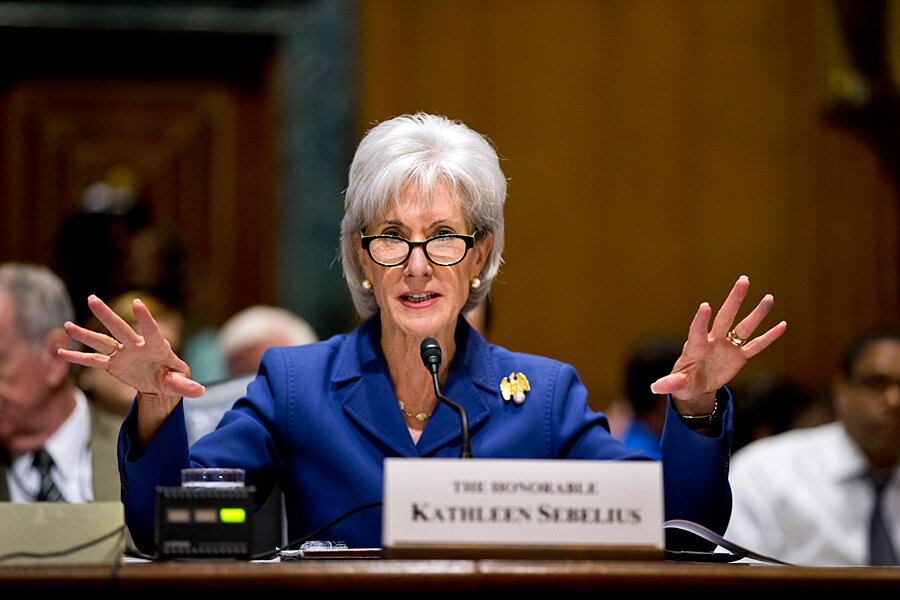HealthCare.gov: Obama administration fights charges it misled on problems
Loading...
| Washington
The Obama administration is fighting back against assertions that it misled Congress last spring about the extent of problems it was experiencing in the development of HealthCare.gov.
A March report by the private consulting firm McKinsey & Co., released by House Republicans Monday night to The Washington Post, laid out various challenges faced by the website’s developers at the Centers for Medicare & Medicaid Services (CMS), the agency within the Department of Health and Human Services (HHS) assigned to build the site.
The Obama administration brought in McKinsey early this year to assess how site construction was proceeding. In its report, the firm flagged issues that now look prescient, given the severity of problems that HealthCare.gov has experienced since it launched on Oct. 1. One such problem was that a lack of “end-to-end operational view” made it hard to identify and address “critical integration gaps.”
Top administration officials, including HHS Secretary Kathleen Sebelius, White House chief technology officer Todd Park, and then-Acting CMS Administrator Marilyn Tavenner, attended briefings on the McKinsey report in late March and early April. A deputy White House chief of staff at the time, Mark Childress, attended a briefing at the White House on April 8, as did Obama health policy adviser Jeanne Lambrew.
Rep. Tim Murphy (R) of Pennsylvania, chairman of the House Energy and Commerce Committee’s panel on oversight and investigations, suggests that administration officials were not completely forthcoming before the HealthCare.gov rollout.
“Despite assurances from Secretary Sebelius, Marilyn Tavenner, and [CMS official] Gary Cohen that ‘all was well’ and ‘on track’ with the launch of the Affordable Care Act, we now have documents dating back to April that call into question what they told us,” Representative Murphy said in a statement.
Statements from the White House and CMS strongly defend the administration’s response to the McKinsey report at the time.
The report “was followed by concrete action to address potential risks – as was intended,” CMS spokeswoman Patti Unruh said. “As we have said, CMS has continually evaluated progress and has taken steps to prioritize and address concerns, and mitigate risks.”
White House spokesman Eric Schultz said that “flags were definitely raised through the development of the website, as would be the case for any IT project this complex.”
“But nobody anticipated the size and scope of the problems we experienced once the site launched,” Mr. Schultz added.
After Oct. 1, when the problems with HealthCare.gov became apparent, the Obama administration designated a general contractor to coordinate repairs to the site and brought in management expert Jeffrey Zients to oversee the process. In daily briefings, CMS officials say the site is improving but that there are still items on a “punch list” of fixes.
The McKinsey assessment was not a technical review of the website’s functionality, administration officials say. Rather, it was meant to describe how consumers would use HealthCare.gov, identify risks to a smooth consumer experience, and suggest strategies to mitigate those risks.
Before HealthCare.gov launched, contractors said in sworn testimony that the site would work and had been adequately tested. The reality proved otherwise. On Oct. 30, Sebelius told a House committee that “we did not adequately do end-to-end testing” on HealthCare.gov before the rollout.
Even now, the site is still being developed. Thirty to 40 percent of the IT systems required to support the website remain to be built, including the payment system to insurers, CMS deputy chief information officer Henry Chao said in congressional testimony Tuesday.
The Obama administration has promised that 80 percent of consumers who need to enroll in coverage will be able to do so smoothly by Nov. 30. In order to have coverage by Jan. 1, 2014, when the individual mandate to carry insurance kicks in, one must enroll by Dec. 15.








